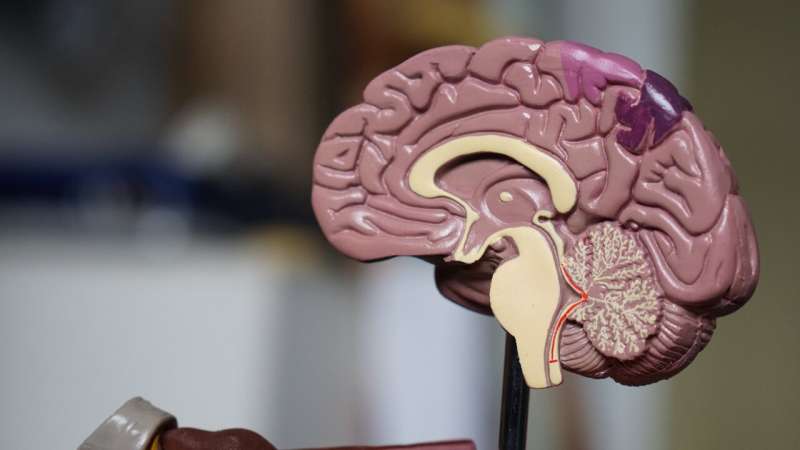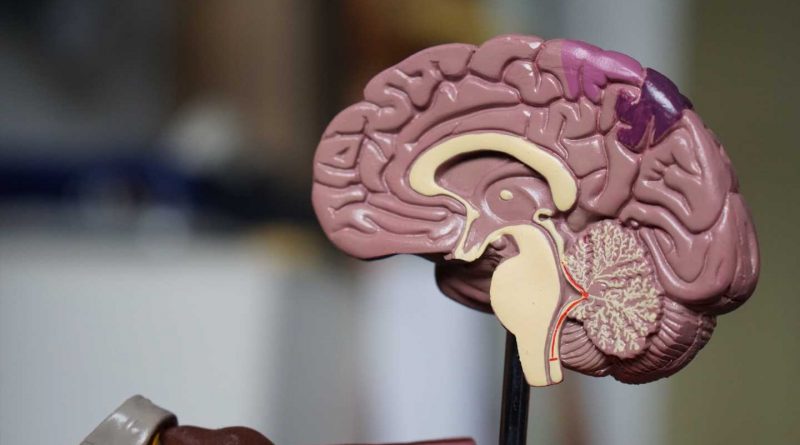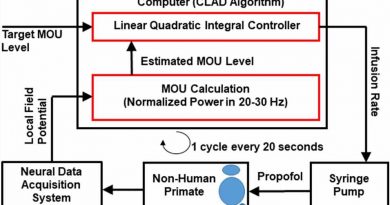3D organoid models show brain mechanisms of Tourette syndrome

Tourette syndrome (TS) is a common disorder characterized by uncontrollable motor or vocal tics that manifests in childhood and can interfere with school performance, relationships, and quality of life. Using stem cells from patients to build 3D models that mirror portions of their brain development in a culture dish, a Yale team has illuminated mechanisms behind why this condition occurs.
Previous research has identified differences in the basal ganglia—the region of the brain beneath the cerebral cortex that governs language and skilled movements—in TS patients compared to the general population. In these patients, the basal ganglia are smaller in size and contain fewer of certain kinds of specialized neurons that regulate how the basal ganglia receive and elaborate information from the cortex. These are interneurons, neurons that are found exclusively in the central nervous system and are essential to the control of inhibition.
To understand why these neurons are absent, the team used stem cells to create organoids resembling the basal ganglia, which are 3D cell configurations that modeled how this portion of the brain grew during embryonic development in a cohort of TS patients. The models have revealed potential pathophysiology behind the disorder, which the team hopes could eventually lead to new therapies. The findings appeared in Molecular Psychiatry on November 29.
“If we want to prevent disorders like Tourette syndrome, we need to study the very beginning when the disease first arises,” says Flora Vaccarino, MD, Harris Professor in the Yale Child Study Center and senior author of the study. “Organoids are a way to go back in time and look at the developmental mechanisms of disease.”
Tourette Syndrome linked to basal ganglia differences
TS usually first appears in school-aged children between five and 10 years old and very often co-occurs with attention deficit hyperactive disorder (ADHD) and obsessive-compulsive disorder (OCD). Children with TS experience tics, which are involuntary movements such as eye blinking, throat clearing, and vocalizations. While sometimes they may be able to temporarily suppress their tics, it requires significant effort. In severe cases, a tic may lead to self-harming behaviors. The disorder often improves in adulthood—in over half of cases, tics become less noticeable and less impairing. While it is highly heritable, researchers have identified few genes involved with the condition.
“The basal ganglia regulate motor programs that we don’t consciously think about, such as speaking,” says Vaccarino. “Many of our movements—walking, riding a bike—are ingrained from when we learned them as kids, and now we just do them without thinking. These programs are stored in the basal ganglia.”
However, when the development of the basal ganglia goes wrong, abnormal movements like tics can arise. “You’re doing something, and suddenly you feel compelled to clear your throat or say a word. It doesn’t pertain to the movement you’re doing, but it pops up involuntarily,” she says.
Imaging studies have shown that the basal ganglia are slightly smaller in children and young adults with TS. Intrigued, Vaccarino’s group previously did a study on post-mortem samples of basal ganglia from deceased TS patients who had donated their brains for research. The study revealed a loss of inhibitory interneurons that are crucial in regulating how the basal ganglia respond to cortical signals.
“When these inhibitory interneurons are lacking,” says Vaccarino, “we think you have abnormal movement due to cortical stimulation not being suppressed.”
However, why these neurons were missing in TS patients remained a mystery. Researchers didn’t know whether they were dying off later in life or perhaps failing to develop altogether. A then-graduate student in Vaccarino’s lab, Melanie Brady, Ph.D., decided to investigate.
Tourette organoids reveal neurological anomalies
For their latest study, the team recruited five TS patients, as well as 11 controls. They took a small sample of skin cells from each patient to create induced pluripotent stem cell lines. Pluripotent stem cells can be programmed to become various kinds of cells, including the neurons of the basal ganglia. This involves growing the pluripotent cell lines into 3D assemblies of cells called organoids, where they progressively differentiate into neurons in a process mimicking embryonic development.
“Organoids give us the unique ability to examine multiple cell types at once and help us better understand the intricate diversity of the human brain in a patient-specific way,” says Brady. The development of basal ganglia neurons could then be compared between organoids derived from control and TS individuals.
First, the team wanted to study the presence of inhibitory interneurons in TS organoids versus the controls. They searched for specific markers of these neurons using immunocytochemical analysis to visualize proteins and also sequenced the RNA to detect inhibitory interneurons-specific transcripts. Both methods confirmed a decrease of inhibitory interneurons in TS organoids.
“This shows that these neurons are not lost; they failed to be generated in the first place,” says Vaccarino. “Following the organoid from the very beginning of its development, we saw that these cells were just not there.”
Furthermore, the progenitor cells that should have become inhibitory interneurons were giving rise to different kinds of cells, causing an abnormal patterning of neurons in the TS organoids.
The team also searched for potential reasons behind the interneuron deficit and mispatterning in the basal ganglia. They found that TS neural stem cells showed a decreased response to a morphogen called Sonic Hedgehog, which is crucial for the development of the basal ganglia in the normal brain and was added at the very early stages of culture to generate the basal ganglia organoids. The researchers believe that this abnormal response is linked to the anomalies shown by the TS organoids.
Abnormalities and tic severity appear related
Finally, the study suggested a relationship between the extent of abnormalities in the basal ganglia organoids and tic severity. One of the five TS patients showed much milder symptoms compared to his cohort. The organoids created from his stem cells showed the smallest deficit of interneurons and less evident mispatterning, suggesting that the organoid phenotype might predict the severity of disease in childhood.
“Identifying potential differences in the neurobiology of TS at the developmental level may one day lead to earlier diagnoses and new methods to manage the disorder,” says Brady.
Now that the team has identified differences in the basal ganglia and a potential mechanism, it plans to study the genetic and epigenetic backgrounds of TS patients and understand how those might contribute to this abnormal response. Vaccarino hopes her group’s ongoing work could lead to potential therapeutic interventions. For instance, future drugs may be able to compensate for the fewer interneurons in the basal ganglia of TS patients by making them more excitable.
“Once you find out why something is happening developmentally, then you can think of ways to make it better,” Vaccarino says.
More information:
Melanie V. Brady et al, Mispatterning and interneuron deficit in Tourette Syndrome basal ganglia organoids, Molecular Psychiatry (2022). DOI: 10.1038/s41380-022-01880-5
Journal information:
Molecular Psychiatry
Source: Read Full Article



